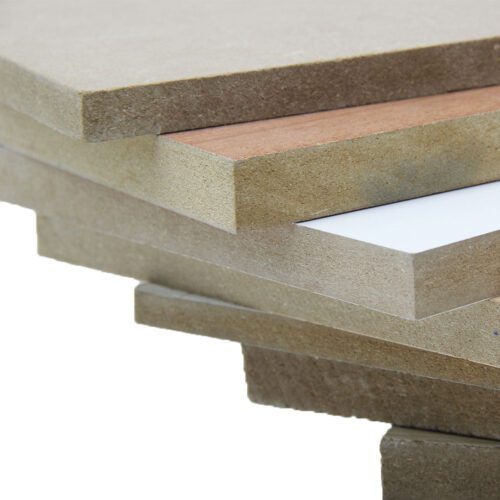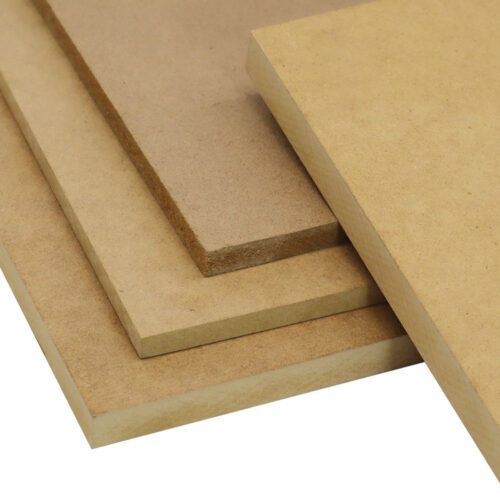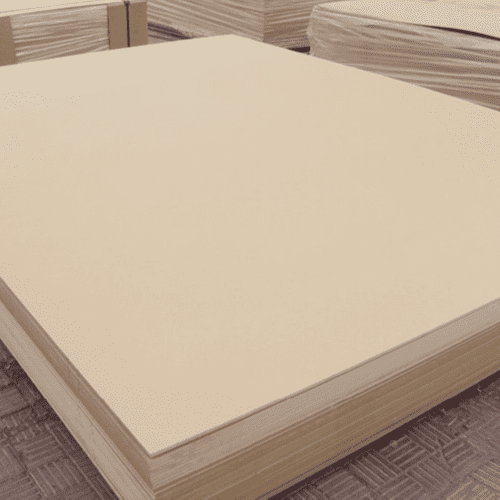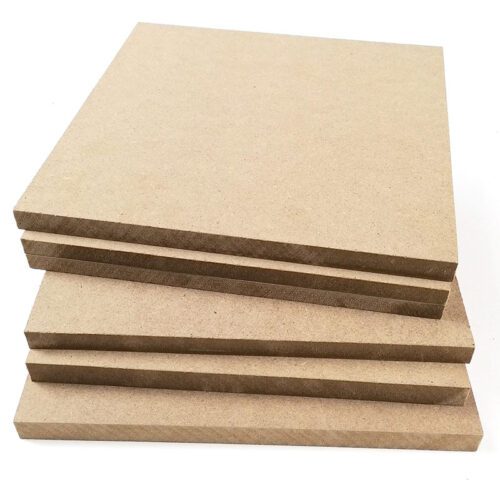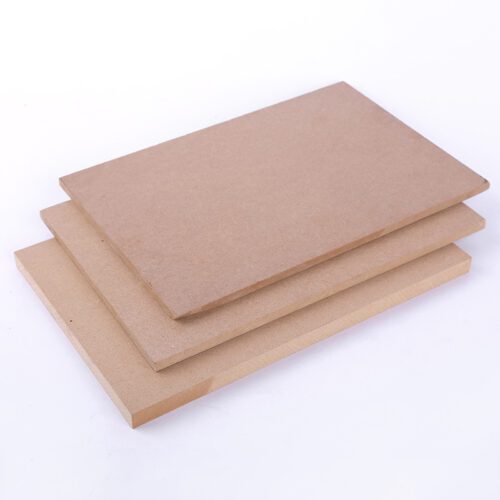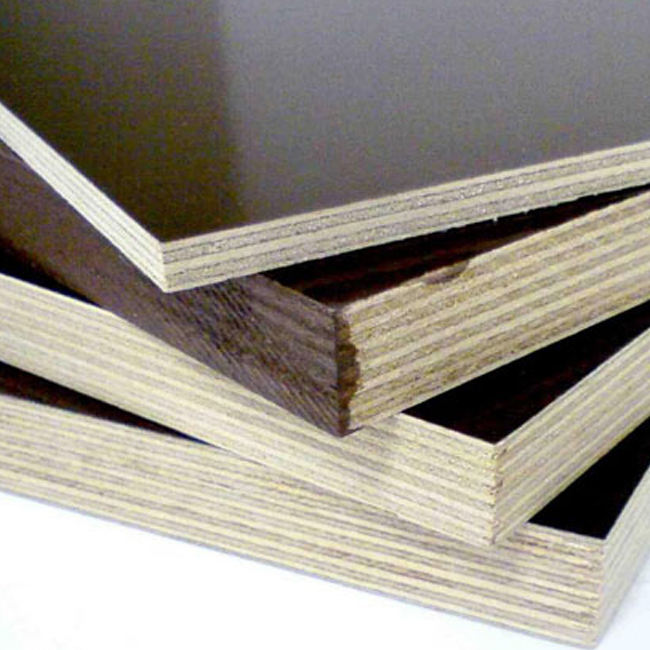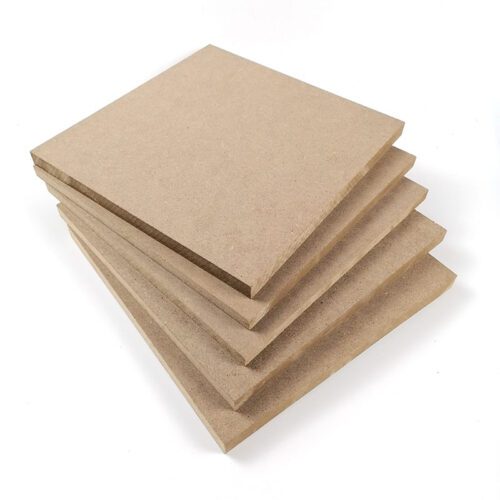
Advantages of MDF:
- Smooth Surface: MDF has a very smooth surface with minimal wood grain and knots, making it ideal for applications that require a smooth surface, such as furniture, door panels, and wall panels.
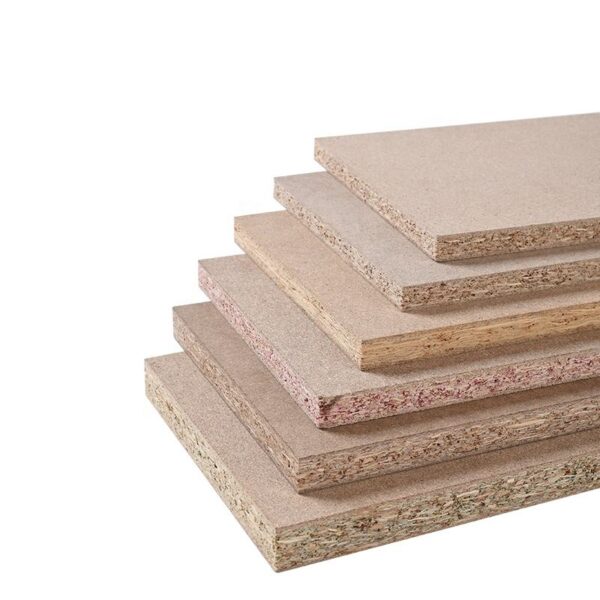
- Stability: Due to the high heat and pressure used in its production, MDF has excellent stability and is less likely to warp or crack, even in damp conditions.
- Cost-Effectiveness: MDF is typically less expensive than solid wood, making it an economical choice for projects with budget constraints.
- Easy to Work With: MDF can be cut, drilled, and shaped using standard woodworking tools, and its smooth surface means that it does not require the same level of surface preparation as solid wood.
- Customizability: MDF can be easily stained, painted, or veneered to create a variety of finishes, allowing for a wide range of design options.
- Environmentally Friendly: The adhesives used in modern MDF production often have low levels of formaldehyde emissions, with some meeting environmental standards such as E0 or E1.
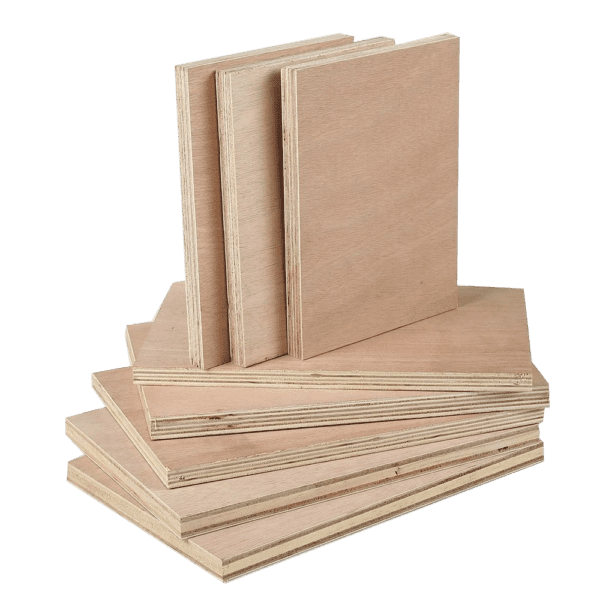
Disadvantages of MDF:
- Weight: MDF is heavier than solid wood, which can make transportation and installation more difficult.
- Strength: While MDF is strong, it is not as strong as solid wood, especially in the edges and thin boards.
- Durability: MDF may swell and deform when exposed to damp conditions or high humidity over time.
- Recycling Value: Since MDF is made from wood fibers and adhesives, it has a low recycling value and is not easily recyclable.
- Repairability: Once damaged, MDF is difficult to repair because its smooth surface does not have the natural texture of wood that can hide repair marks.
- Fire Resistance: Uncoated MDF decomposes rapidly in a fire, so it usually requires fire retardant treatment.
As a type of engineered wood, MDF has many advantages, including a smooth surface, stability, cost-effectiveness, and ease of processing, which makes it widely used in construction and furniture manufacturing. However, it also has some disadvantages, such as its weight, durability, recycling value, and repairability. When choosing MDF, it is important to consider the specific environmental and usage requirements.

